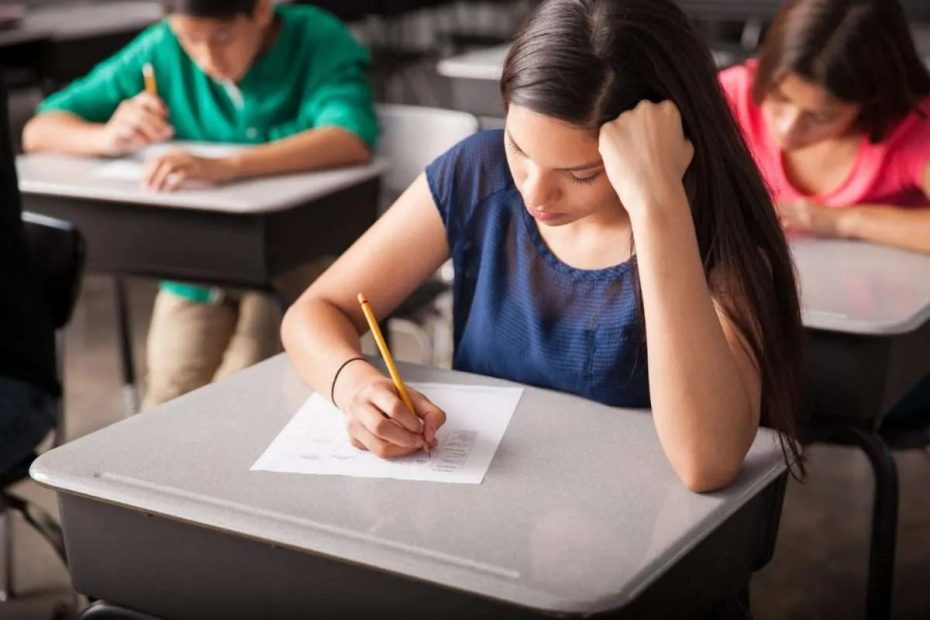The IELTS Reading Test requires a lot of practice and preparation if you are going to get the highest band score possible. And one way to prepare is to have a good understanding of the different types of question in the IELTS Reading Test.
One of the most difficult questions is the “matching information to paragraphs” question, sometimes called “matching statements“.
In this kind of question, you need to match statements to paragraphs (or sections) in the reading passage.
In this post we’re going to look at:
- the key information about this question type
- examples of this question
- the reading skills you need to use
- the common problems faced by IELTS test takers
- I’ll give you some tips
- and a strategy for approaching this question type.
Key Information
- The statements in the question will be related to specific information in the text.
- There will usually be between 3 and 6 statements.
- You do not need to know what the whole paragraph is about. You just need to find the information in the paragraph.
- The information will usually be in a whole phrase or sentence, not a single word.
Example
So let’s look at an example of one of these question types from a past paper.

As you can see above, you are given a list of statements (there are 4 in the above question). Your task is to match these statements to the correct sections in the reading text.
- Each section in the reading test will have been labelled A, B, C, D, etc. Your answer will therefore be the letter of the section, so A, B, C, D, E, F or G.
- Usually each section is a paragraph, but sometimes a section will contain 2 paragraphs.
- There will usually be more sections than questions.
Also, one section might match more than one statement. In other words, a section might contain two pieces of information. So these questions usually include the words, “you may use any letter more than once”.
Reading Skills
This type of question will test a variety of reading skills:
- your ability to skim read
- your ability to scan a text for specific information
- your ability to read for detailed information.
Skimming
You will first have to be able to skim the reading passage to get the general meaning of each paragraph.
Scanning
You will also have to scan for specific words within the paragraphs.
These words may be identical to the words in the question statements, but they will often be reworded using synonyms, paraphrases and carrier nouns.
Synonyms, Paraphrases and Carrier Nouns
The information in the text is probably going to be written using different words and phrases to the statements. So this will test your ability to identify synonyms and paraphrases.
For example, the statement in question 14 uses the phrase “building“. However, the actual text uses the word “construction“, which is a synonym of “building“. So a knowledge of synonyms is important.
Paraphrasing involves rewording a whole phrase, sometimes by moving different parts of the sentence around, using synonyms and using different parts of speech.
For example, “examples of the wide range of facilities available at some new stadiums” could be paraphrased like this: “many modern stadia are equipped with hotels, restaurants, conference centres and shops.”
It’s also important to have a knowledge of carrier nouns. Carrier nouns are nouns which can be used to describe lots of different ideas. Examples of carrier nouns include “development”, “idea”, “problem”, “advantage”, “reason”, “effect”, and many more.
The statements in the example questions use carrier nouns:
- question 14 is asking you to look for negative attitudes
- question 15 is asking you to look for figures
- question 16 is asking you to look for examples
- question 17 is asking you to look for disadvantages


So understanding the meaning of these carrier nouns is important.
(Click here to read more about carrier nouns)
As you can see, a wide vocabulary will help you get a high band score in the IELTS Reading Test.
Read For Detail
Once you have found the words and phrases in the text that you think MAY relate to the words and phrases in the statement, you then need to read the surrounding text carefully to find out IF the text really IS a match for the statement.
Common Problems
One thing that makes this question type quite difficult is that the answers do not appear in the same order as the questions. The answers could be anywhere in the text, so it takes time to find the information.
The second problem is that the statements don’t usually refer to the main idea of each paragraph. The statements refer to specific information within each paragraph. This means the “matching statements” question is very different to the “matching headings” question, where you can usually find the answer by reading the first 1-2 sentences of a paragraph. In the “matching statements” question, the information you need could be anywhere in the paragraph. This makes it a real test of your scanning skills.
Also, remember that one section or one paragraph may match MORE THAN ONE statement. Many test takers forget this, and don’t understand why they can’t find the answer to one of the statements.
Tips
Tip 1: Do this question last. If you do other questions first, you will become familiar with the passage and this will help you identify the correct information more quickly and easily later on.
Tip 2: Search first for the information that is easiest to find. For example, names, places, numbers and dates. For example, question 15 in our example is asking you to look for “figures” – i.e. “numbers”. Numbers are easier to find than “disadvantages”!
Doing the easier questions first has 2 benefits:
- Answering the easier questions will help you to become more familiar with the content of the text overall, which will make it easier for you to answer the harder questions.
- If you are running out of time and need to move on to the next set of questions, you will at least have gained the marks from the easy questions. You might not get all 4 marks (as in our example), but you might get 2 from the easy ones. It’s better to move on to the next set of questions than spend a lot of time doing hard questions.
Step-by-Step Strategy
So this is one way to approach these tasks. Feel free to adapt it, of course.
Step 1: Read the instructions carefully
Hopefully, this goes without saying, but many test takers forget this. Make sure you know what you have to do: is this really a “matching statements” question?
Step 2: Read each statement
Read each statement. Try to understand the main idea of each statement. What kind of information should you be looking for?
- Pay attention to carrier nouns
- Think about ways the statement might be paraphrased and what synonyms might be used.
Step 3: Skim the Whole Passage
Skim read the whole passage – get a general understanding of the text, and what each paragraph is about. This will help you to find the paragraph relevant to each statement later on.
You can circle or underline text that indicates the main idea, or write a few words next to each paragraph.
Step 4: Scan for Information
Choose one of the statements (remember, do the easier statements first, the ones referring to names, places, dates, numbers).
If you skim read the text, then you may be able to predict which paragraph matches the statement because you may have noticed something in the text related to the statement.
Otherwise, scan the whole text until you find words or phrases that may be connected to the statement. Circle or underline these words and phrases.
Step 5: Read for Detail
Read the surrounding text, 1-3 sentences. Do these sentences mention the same thing as the statement? If they do, write your answer on the answer sheet and cross out the statement from the question paper.
If they don’t, go back to Step 4.
If you’re not sure, read the text carefully again…
BUT
if you’re not 100% sure of the answer, maybe only 80-90% sure, then you are probably correct. There are unlikely to be two places in the text which are similar to one statement.
So that’s how to approach the “matching statements” IELTS Reading Test question. It’s one of the hardest question in the IELTS Reading Test, but if you know what to do and practise this carefully, you can do better than 90% of IELTS candidates.
You can practise this question here: (questions 14 to 18 are matching information questions)
Good luck with it!




